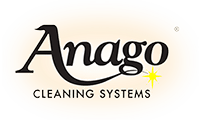
There’s one thing kids share unbiasedly, and that’s germs. Children are more prone to spreading germs and catching diseases because, at a young age, they are exposed to unhygienic behaviors like poor hand-to-mouth habits, mouthing objects, and undeveloped personal hygiene habits like failing to wash their hands properly after visiting the toilet. This is what makes cleaning a childcare centre different from any other cleaning. To reduce susceptibility to illness, childcare centres must maintain top-notch cleanliness.
A Three-Pronged Approach
Cleaning a childcare centre goes beyond merely clearing dust off surfaces. Remember, as aforementioned, kids, unlike adults haven’t developed their hygienic habits, so one aim of cleaning is to ensure that everything in their surroundings is germ-free. Professional cleaning will, therefore, involve basic cleaning, disinfecting, and sanitizing. Let me explain:
Cleaning is the mechanical/physical removal of accumulated grease, dirt and debris from surfaces. But this is just basic cleaning which means that some germs (these are invisible to the eyes) are still left on the surface. Cleaning may be suitable for many low-risk areas in the childcare centre like the walls, but high-risk surfaces like the toys, toilets and nappy change areas need to be sanitized or disinfected soon after cleaning and rinsing the area.
Sanitizing is using a chemical to inactivate or reduce germs to a level unlikely to cause the spread of disease. Disinfecting, on the other hand, requires stronger chemicals that virtually kill all the germs. In essence, sanitizing reduces and minimizes germs but does not kill the growth of bacteria, viruses, and fungi – it’s disinfecting that does that. Food contact surfaces, dishes, and toys that children put into their mouth should be sanitized after cleaning. Surfaces such as toilets and diaper areas that don’t come into contact with the mouth should be disinfected. It’s also worth noting that the only sanitizers and disinfectants used in childcare settings should be only those permitted by law.
Specific Areas of Cleaning
To maintain high standards of cleanliness, childcare centres should follow a thorough cleaning routine every day. Tiles and vinyl floors should be vacuumed and swept daily. At least once every week, they should be wet-mopped using detergent and warm water. Toddler dining areas should be mopped daily and carpeted areas vacuumed daily. In infant and toddler areas, the carpeted areas should be steam-cleaned at least quarterly. The rest of the carpeted areas can be wet or steam cleaned twice annually.
The bathroom surface is one of the most sensitive areas in a childcare centre. All bathroom surfaces like wash basins, tap handles, toilet flush handles/buttons, toilet seats, etc. should be washed at least once daily or more often if visibly soiled. Toilets should be cleaned and disinfected after each use and the floors should be cleaned and disinfected at the end of each day.
Any fabrics like towels, linens and pillows need to be washed and sanitized before being allocated to a specific child. Children centres should adopt a procedure for cleaning fabrics to prevent the spread of germs and staph infections.
This article is just a peek into the intense cleaning that goes on in a childcare centre – there’s even more that goes on! That’s why Anago will work with you to create a cleaning plan custom-tailored to meet your centre’s needs. Keep in mind, detailed processes must be followed when cleaning childcare centres.
